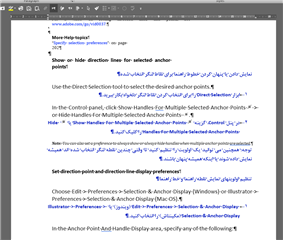Hi,
I imported a .docx document into Trados Studio 2019 Pro SR1 and whole texts (English and Persian) are listed in the Source column because both language texts were typed in an only document and separate by the simple Enter key. Now, what’s the fastest method to cut and move translated text (Persian Language) to the Target column, in front of their relative source segment without mistakes and missing, in a clean way.
Best,
Masoud

Generated Image Alt-Text
[edited by: Trados AI at 5:11 PM (GMT 0) on 28 Feb 2024]


 Translate
Translate


